Public Archive
A patchy record of DIY satellite imagery and weather notes since 2020. The open-weather public archive is open to everyone willing and able to contribute.
Words for Climate
An evolving set of words chosen by contributors to reflect their experiences of the climate crisis.
Filter by
Ground Station Type
Automatic Ground Stations are local, semi-permanent stations that record and upload satellite transmissions automatically once per day. Manual ground stations are DIY and often mobile; operators manually record and upload satellite transmissions.
Satellites
The archive contains Automatic Picture Transmissions (APT) by US weather satellites NOAA-15, NOAA-18 and NOAA-19.
Nowcasts
Collective earth-sensing events led by open-weather, co-produced by a network of contributors around the world.
Contributors
A list of tagged contributors only. Please contact us if you want to be added.
Automatic Ground Stations
Search
2025-08-31 22:14:00
Diana Engelmann
Filip Shatlan
Gainesville, Florida , United States
United States
NOAA-19
2025-08-31 17:10:00
Nastassja Simensky
Longyearbyen, Svalbard
Svalbard
NOAA-15

2025-08-31 10:55:00
Diana Engelmann
Filip Shatlan
Gainesville, Florida , United States
United States
NOAA-19

2025-08-31 10:05:00
Oppressive Heat Project
Phnom Penh, Cambodia
Cambodia
NOAA-19

2025-08-30 18:53:00
Oppressive Heat Project
Phnom Penh, Cambodia
Cambodia
NOAA-15

2025-08-30 10:57:00
Nastassja Simensky
Longyearbyen, Svalbard
Svalbard
NOAA-15

2025-08-29 21:40:00
Oppressive Heat Project
Phnom Penh, Cambodia
Cambodia
NOAA-19

2025-08-29 08:59:00
Diana Engelmann
Filip Shatlan
Gainesville, Florida , United States
United States
NOAA-15
2025-08-29 13:42:00
Nastassja Simensky
Longyearbyen, Svalbard
Svalbard
NOAA-19

2025-08-28 22:53:00
Diana Engelmann
Filip Shatlan
Gainesville, Florida , United States
United States
NOAA-19
2025-08-28 11:33:00
Diana Engelmann
Filip Shatlan
Gainesville, Florida , United States
United States
NOAA-19
2025-08-28 13:55:00
Nastassja Simensky
Longyearbyen, Svalbard
Svalbard
NOAA-19

2025-08-28 07:03:00
Oppressive Heat Project
Phnom Penh, Cambodia
Cambodia
NOAA-15

2025-08-27 19:09:00
Nastassja Simensky
Longyearbyen, Svalbard
Svalbard
NOAA-19

2025-08-27 18:32:00
Oppressive Heat Project
Phnom Penh, Cambodia
Cambodia
NOAA-15

2025-08-26 23:17:00
Diana Engelmann
Filip Shatlan
Gainesville, Florida , United States
United States
NOAA-19

2025-08-26 08:37:00
Diana Engelmann
Filip Shatlan
Gainesville, Florida , United States
United States
NOAA-15

2025-08-26 18:58:00
Oppressive Heat Project
Phnom Penh, Cambodia
Cambodia
NOAA-15

2025-08-26 11:02:00
Nastassja Simensky
Longyearbyen, Svalbard
Svalbard
NOAA-15

2025-08-25 20:17:00
Diana Engelmann
Filip Shatlan
Gainesville, Florida , United States
United States
NOAA-15

2025-08-25 19:35:00
Nastassja Simensky
Longyearbyen, Svalbard
Svalbard
NOAA-19

2025-08-25 09:03:00
Diana Engelmann
Filip Shatlan
Gainesville, Florida , United States
United States
NOAA-15

2025-08-25 09:41:00
Oppressive Heat Project
Phnom Penh, Cambodia
Cambodia
NOAA-19
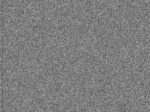
2025-08-24 20:44:00
Diana Engelmann
Filip Shatlan
Gainesville, Florida , United States
United States
NOAA-15
2025-08-24 22:46:00
Oppressive Heat Project
Phnom Penh, Cambodia
Cambodia
NOAA-19

2025-08-24 16:53:00
Nastassja Simensky
Longyearbyen, Svalbard
Svalbard
NOAA-15

2025-08-24 09:31:00
Diana Engelmann
Filip Shatlan
Gainesville, Florida , United States
United States
NOAA-15

2025-08-24 09:53:00
Oppressive Heat Project
Phnom Penh, Cambodia
Cambodia
NOAA-19

2025-08-23 22:15:00
Diana Engelmann
Filip Shatlan
Gainesville, Florida , United States
United States
NOAA-19

2025-08-23 23:00:00
Oppressive Heat Project
Phnom Penh, Cambodia
Cambodia
NOAA-19

2025-08-23 17:19:00
Nastassja Simensky
Longyearbyen, Svalbard
Svalbard
NOAA-15

2025-08-23 08:16:00
Diana Engelmann
Filip Shatlan
Gainesville, Florida , United States
United States
NOAA-15

2025-08-23 10:06:00
Oppressive Heat Project
Phnom Penh, Cambodia
Cambodia
NOAA-19
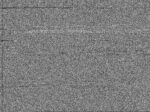
2025-08-22 19:56:00
Diana Engelmann
Filip Shatlan
Gainesville, Florida , United States
United States
NOAA-15
2025-08-22 08:43:00
Diana Engelmann
Filip Shatlan
Gainesville, Florida , United States
United States
NOAA-15
2025-08-22 08:37:00
Heidi Neilson
Gilboa, New York, United States
United States
NOAA-15

2025-08-22 19:03:00
Oppressive Heat Project
Phnom Penh, Cambodia
Cambodia
NOAA-15

2025-08-22 11:07:00
Nastassja Simensky
Longyearbyen, Svalbard
Svalbard
NOAA-15

2025-08-21 11:39:00
Zack Wettstein
Seattle, United States
United States
NOAA-19

2025-08-21 09:04:00
Heidi Neilson
Gilboa, New York, United States
United States
NOAA-15

2025-08-21 13:43:00
Nastassja Simensky
Longyearbyen, Svalbard
Svalbard
NOAA-19

2025-08-20 19:34:00
Zack Wettstein
Seattle, United States
United States
NOAA-15

2025-08-20 19:10:00
Heidi Neilson
Gilboa, New York, United States
United States
NOAA-15

2025-08-20 11:52:00
Zack Wettstein
Seattle, United States
United States
NOAA-19

2025-08-20 16:58:00
Nastassja Simensky
Longyearbyen, Svalbard
Svalbard
NOAA-15

2025-08-19 21:53:00
Zack Wettstein
Seattle, United States
United States
NOAA-19

2025-08-20 06:05:00
Maufox
Mauritius, Mauritius
Mauritius
NOAA-15

2025-08-20 07:12:00
Oppressive Heat Project
Phnom Penh, Cambodia
Cambodia
NOAA-15

2025-08-19 19:36:00
Heidi Neilson
Gilboa, New York, United States
United States
NOAA-15

Although I was prepared for it, it is still such a bummer to find an empty static grey where an image should be. RIP POES satellites! You are missed.
2025-08-19 08:37:00
Zack Wettstein
Seattle, United States
United States
NOAA-15

2025-08-19 18:56:00
Maufox
Mauritius, Mauritius
Mauritius
NOAA-15

2025-08-19 18:42:00
Oppressive Heat Project
Phnom Penh, Cambodia
Cambodia
NOAA-15

2025-08-19 10:45:00
Nastassja Simensky
Longyearbyen, Svalbard
Svalbard
NOAA-15

2025-08-18 22:06:00
Zack Wettstein
Seattle, United States
United States
NOAA-19

2025-08-19 06:30:00
Maufox
Mauritius, Mauritius
Mauritius
NOAA-15

2025-08-18 19:23:00
Nastassja Simensky
Longyearbyen, Svalbard
Svalbard
NOAA-19

2025-08-18 09:04:00
Zack Wettstein
Seattle, United States
United States
NOAA-15

2025-08-18 19:22:00
Maufox
Mauritius, Mauritius
Mauritius
NOAA-15

2025-08-18 08:42:00
Heidi Neilson
Gilboa, New York, United States
United States
NOAA-15

2025-08-18 19:08:00
Oppressive Heat Project
Phnom Penh, Cambodia
Cambodia
NOAA-15

2025-08-17 22:19:00
Zack Wettstein
Seattle, United States
United States
NOAA-19

2025-08-18 06:56:00
Maufox
Mauritius, Mauritius
Mauritius
NOAA-15

2025-08-17 19:13:00
Zack Wettstein
Seattle, United States
United States
NOAA-15

2025-08-17 18:49:00
Heidi Neilson
Gilboa, New York, United States
United States
NOAA-15

2025-08-11 13:37:32
COSMOS Astronomy Club MIT WPU
Pune , India
India
NOAA-15

2025-08-17 19:48:00
Maufox
Mauritius, Mauritius
Mauritius
NOAA-15

2025-08-17 14:34:00
Nastassja Simensky
Longyearbyen, Svalbard
Svalbard
NOAA-19

2025-08-16 22:31:00
Zack Wettstein
Seattle, United States
United States
NOAA-19

2025-08-17 07:22:00
Maufox
Mauritius, Mauritius
Mauritius
NOAA-15

2025-08-17 09:42:00
Oppressive Heat Project
Phnom Penh, Cambodia
Cambodia
NOAA-19

2025-08-16 19:39:00
Zack Wettstein
Seattle, United States
United States
NOAA-15

2025-08-16 19:15:00
Heidi Neilson
Gilboa, New York, United States
United States
NOAA-15

2025-08-16 23:01:00
Foto Colectania
Hangar
Ràdio Web MACBA
Barcelona, Spain
Spain
NOAA-19

2025-08-16 20:15:00
Maufox
Mauritius, Mauritius
Mauritius
NOAA-15

2025-08-16 17:03:00
Nastassja Simensky
Longyearbyen, Svalbard
Svalbard
NOAA-15

2025-08-16 18:35:00
Maufox
Mauritius, Mauritius
Mauritius
NOAA-15

2025-08-16 07:49:00
Maufox
Mauritius, Mauritius
Mauritius
NOAA-15

2025-08-16 09:54:00
Oppressive Heat Project
Phnom Penh, Cambodia
Cambodia
NOAA-19

2025-08-16 06:10:00
Maufox
Mauritius, Mauritius
Mauritius
NOAA-15

2025-08-15 11:15:00
Zack Wettstein
Seattle, United States
United States
NOAA-19
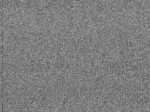
2025-08-15 08:42:00
Zack Wettstein
Seattle, United States
United States
NOAA-15
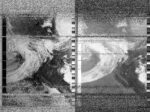
After weeks of excessive heat and smoke, today's image from NOAA 15 captures the arriving atmospheric river, bringing much needed rain amidst a record-setting drought in the Western US and Washington, and the first hints of fall on the horizon. At this point, each additional day of decoding a transmission from the one remaining program satellite is a gift.
2025-08-15 19:00:00
Maufox
Mauritius, Mauritius
Mauritius
NOAA-15

2025-08-15 08:21:00
Heidi Neilson
Gilboa, New York, United States
United States
NOAA-15
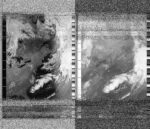
2025-08-15 18:47:00
Oppressive Heat Project
Phnom Penh, Cambodia
Cambodia
NOAA-15

2025-08-15 10:50:00
Nastassja Simensky
Longyearbyen, Svalbard
Svalbard
NOAA-15

2025-08-15 09:20:00
Foto Colectania
Hangar
Ràdio Web MACBA
Barcelona, Spain
Spain
NOAA-15

2025-08-15 06:35:00
Maufox
Mauritius, Mauritius
Mauritius
NOAA-15

2025-08-14 11:27:00
Zack Wettstein
Seattle, United States
United States
NOAA-19

2025-08-14 09:08:00
Zack Wettstein
Seattle, United States
United States
NOAA-15

2025-08-14 21:29:00
Oppressive Heat Project
Phnom Penh, Cambodia
Cambodia
NOAA-19

2025-08-14 08:52:00
Diana Engelmann
Filip Shatlan
Gainesville, Florida , United States
United States
NOAA-15

2025-08-14 08:47:00
Heidi Neilson
Gilboa, New York, United States
United States
NOAA-15

2025-08-14 12:00:00
Foto Colectania
Hangar
Ràdio Web MACBA
Barcelona, Spain
Spain
NOAA-19

2025-08-14 11:16:00
Nastassja Simensky
Longyearbyen, Svalbard
Svalbard
NOAA-15

2025-08-14 07:01:00
Maufox
Mauritius, Mauritius
Mauritius
NOAA-15

2025-08-13 19:18:00
Zack Wettstein
Seattle, United States
United States
NOAA-15

2025-08-13 18:54:00
Heidi Neilson
Gilboa, New York, United States
United States
NOAA-15

2025-08-13 11:40:00
Zack Wettstein
Seattle, United States
United States
NOAA-19

2025-08-13 21:42:00
Oppressive Heat Project
Phnom Penh, Cambodia
Cambodia
NOAA-19

2025-08-13 13:44:00
Nastassja Simensky
Longyearbyen, Svalbard
Svalbard
NOAA-19
